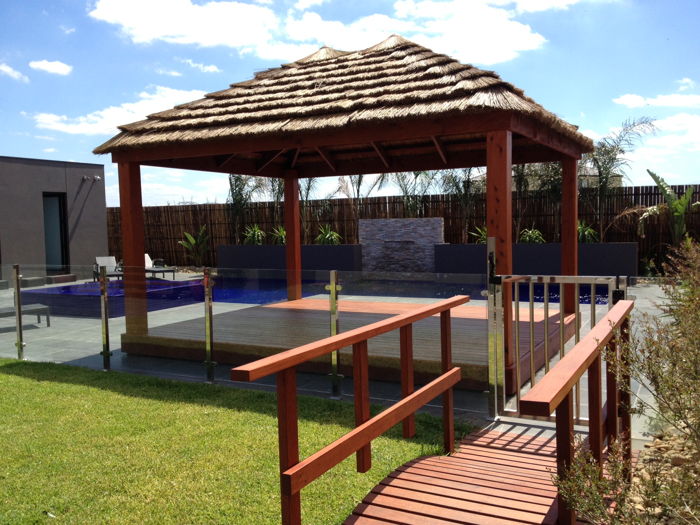Covering is the art of material that utilizations dry vegetation materials, for example, straw, palm leaves, or water reed weaved together to frame a solid covering.
Covered rooftops go back to Europe from before the middle Ages. However, they are very much perceived for their utilisation in tropical atmospheres from such places as Mexico, Fiji, and Hawaii to give some examples.
Covered rooftops are normally climate safe because the dried materials don’t retain a lot of dampness. They additionally stand up well against the sun and the wind making them awesome for lawn apparatuses.
Thoughts for Incorporating a Thatched Umbrella Kit into your Backyard Decor
Today, you regularly observe cover materials utilised as a part of present day tiki culture stylistic layout due to its tropical look and feel. The utilisation of covered umbrella units is a simple approach to making this look you. Here are some approaches to join covered umbrella packs in your patio stylistic layout:
Tiki Bar – a covered umbrella pack is ideal for a tiki bar since it runs with the tropical tiki culture look. There is nothing superior to tasting mai tais under a covered palapa.
Pool Umbrellas – transform your poolside umbrellas into covered umbrellas keeping in mind the end goal to make a tropical excursion desert spring. Other than making a sentiment a fascinating excursion, covered umbrellas will make a fundamentally cooler condition than canvas.
Open air Kitchen – remain cool while you are taking care of your grill. Other than their incredible look, covered palapa umbrellas are awesome for open-air kitchens and grill zones since they make shade and furthermore permit the warm air from the flame broil to get away.
Luau Party – regardless of the possibility that you would prefer not to fuse the tropical covered look like a perpetual installation to your terrace stylistic layout, covered umbrella packs can come in littler sizes that are sufficiently simple to introduce for your night’s luau and similarly as simple to bring down and store for one more day.
The picture of the lighthearted tropical island has been with us since some time before the 1930’s. Amid the vast majority of the mid-twentieth century, American children read books and experienced childhood with eighteenth and nineteenth-century enterprise stories by any semblance of Jules Verne, a large portion of which included tropical islands as their settings. Indeed, even Robinson Crusoe used to be viewed as a youngsters’ book, not grain for school courses.
In this way, when those children grew up, seeing a drinking foundation with genuine props, for example, you would hypothetically discover in a genuine living “tropical heaven” (“tiki veils” and divider mounted tropical fish) started their creative abilities. It was the ideal mix of “reality” and favour. Apparently, the Tiki bars were identified with genuine Polynesian culture and named after the Maori legendary figure of Tiki, despite the fact that the association was quite questionable.
Source: African Huts

